|
|

In the British Caribbean, many freed slaves had little choice
but to continue to work for their old masters. Production was still
mainly aimed at supplying the external British market and it was
a white British elite who remained in overall control of economic
activity.
The British Caribbean islands differed from other British colonies
in that the original inhabitants had long since died out and most
of the people were living there as a result of some form of slavery.
From 1845 onwards, plantation owners could draw upon so-called ‘coolie-labour’,
in addition to the ex-slave population. ‘Coolies’ referred
to thousands of indentured Indian labourers who were brought to
the colonies. The labourers worked in slavery-like conditions,
contractually bound to their employers for fixed periods. Prior
to the development of the Transatlantic Slave Trade, white British
indentured labourers had worked on the plantations, along with
thousands of Irish Catholics who were shipped out following Cromwell’s
brutal campaigns in Ireland in the mid-seventeenth century. These
people, who struggled to adjust to the difficult climate, were
too few in number to sustain production so slaves had been transported
from Africa to work beside them. In the mid-nineteenth century
the British government introduced Chinese labourers to the colonies,
adding to the cultural melting pot and the multiple ethnic reference
points that form Caribbean identity. Around 40,000 African indentured
labourers were also brought in at this time.
Novelist and cultural critic Mike Phillips writes:
In the Caribbean, the African descended majority had no pre-existing
claims on the land, no widely accepted institutions which predated
slavery and no historical continuity before their arrival in the
region. Therefore national identity had to be created from scratch,
and using only what was available. Given the polyglot nature of
the community and their total isolation from previous custom and
practice, the Black majority in the Caribbean territories ruled
by Britain had no alternative but to echo and mirror the life of
the British.
The injustices of the old trade lived on after abolition in discrimination
based upon skin colour. In Bermuda, for example, a system of racial
segregation similar to that of the southern states of the USA existed
until 1959, restricting the public places where black people could
go. More subtle forms of discrimination also existed. When purchasing
slaves or hiring employees, plantation owners tended to favour
the lighter-skinned for house work, the darker ones for field work,
thereby instilling a class distinction based on degrees of blackness.
In Small Island, when Celia Langley says Jamaicans must help with
the war effort as the Nazis would bring back slavery, her friend
Hortense reflects:
I could understand why it was of the greatest importance to her
that slavery should not return. Her skin was so dark. But mine
was not of that hue – it was the colour of warm honey. No
one would think to enchain someone such as I. All the world knows
what the rousing anthem declares: ‘Britons never, never,
never shall be slaves’.
This ‘grading’ of skin, informed by Western rather
than African aesthetics, became an accepted practice among both
black and white. A light-brown skin was perceived for many years
as being more attractive and more civilised than a dark one.
In an interview with the Guardian in 2004, Andrea Levy said:
My parents came from a class in Jamaica called ‘the coloured
class’. There are white Jamaicans, black Jamaicans and coloured
Jamaicans. My parents’ skin was light. They were mixed race,
effectively. They came to Britain with a kind of notion that pigmentation
represented class. They didn't necessarily have more money or education,
but because they were somehow closer to being white, this was seen
as a badge of pride.
In Small Island the character Hortense is astounded on her first
full-day in Britain that Queenie should try to reassure her by
saying, ‘I’m not worried about what busybodies say.
I don’t mind being seen in the street with you’. The
well-spoken, honey-coloured, white-gloved Hortense thinks if anyone
is to be ashamed it is her for being seen with a woman ‘dressed
in a scruffy housecoat with no brooch or jewel, no glove or even
a pleasant hat to life the look of her’. She has yet to realise
that to the British she is black and therefore an object of curiosity,
contempt and even hostility.
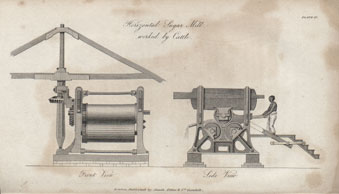
Sugar mill worked by cattle from The Nature and Properties of the
Sugar Cane by George Richardson Porter, 1830 (Bristol Library Service).
After abolition, the slave trade continued to shape the colonisation
of Africa. The failure of some African states to find alternative
sources of income to that of slave trading encouraged Britain to
interfere with African affairs. Previously, Europeans had not ventured
far into Africa and had had to obtain permission from local kings
and chiefs before engaging in trade for slaves in the designated
trading areas. Now that slavery was deemed immoral, British colonisation
was ‘offered’ as a means of developing more respectable
forms of trade. As the other colonial powers gradually abandoned
the slave trade too, a similar justification was used by them to
start exploiting Africa for their own ends. At first, European
trading activity remained largely confined to the Western coast
and the Cape, but intense rivalry between the colonial powers by
the late-nineteenth century led to the ‘Scramble for Africa’ in
which areas of the interior that previously were only informally
influenced by the Europeans came directly under their control.
Describing the jostling for position, a British politician wrote
in 1892:
We are to effect the reconquest of Equatoria and occupy the Albert
Lakes and the whole of the basin of the Upper Nile, Why? For fear
of the French, the Germans, the Belgians etc etc.
Africa was a source of gold, rubber, cocoa, diamonds, palm oil,
ivory, pepper and other valuable trading goods. The colonisation
of Africa by the European powers contributed to the inequalities
that exist today between the prosperous West and the impoverished,
debt-ridden African countries. In addition, because the Europeans
ignored centuries of tribal and cultural differences when carving
up the continent, with the coming of independence has also come
the outbreak of long-simmering civil wars.
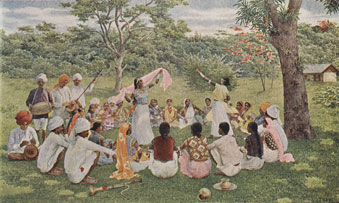
The Indo-Caribbean community. Read
more...
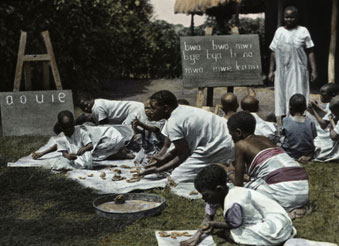
African missionaries. Read
more...
|
|

Anti-apprenticeship banner.
Read
more...
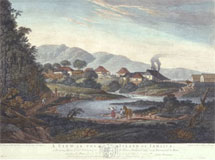
Jamaican sugar plantations. Read more...
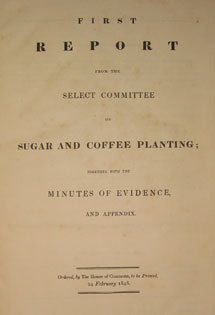
The 1848 Select Committee.
Read
more...
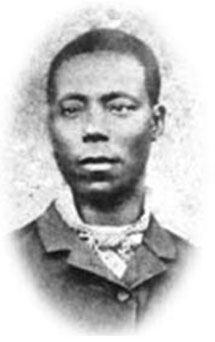
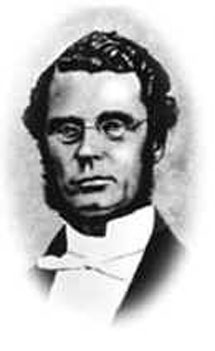
The Morant Bay Rebellion.
Read
more...

Sugar cane harvest near Georgetown, Guyana, 1958 (Science and
Society/NMPFT - Walter Nurnberg).
|
|